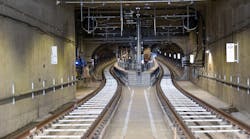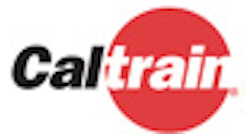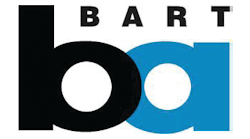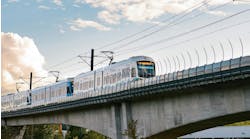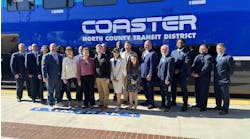SFMTA T-Third opens in new Central Subway
The San Francisco Municipal Transportation Agency (SFMTA) began service along the T-Third section of the Central Subway on Jan. 7. The historic new route connects Chinatown to Sunnydale and the Bayview in the new Central Subway, which opened with a soft launch in November 2022. The new T-Third route will vastly improve transportation and greatly reduce travel times along its stops, including residential neighborhoods and commercial corridors.
With an above-ground station in SoMa at 4th and Brannan and subway stations at Yerba Buena/Moscone Center, Union Square/Market and Chinatown–Rose Pak, the Central Subway Project is critical in connecting the southeastern and the northeastern parts of San Francisco, supporting economic vitality and cultural growth in the Visitacion Valley, the Bayview, Dogpatch, SoMa, Union Square and Chinatown neighborhoods.
“The Central Subway will instantly become a crucial artery in San Francisco, connecting families to a booming corridor in the heart of the city,” said U.S. Rep. Nancy Pelosi (D-CA-11). “This new line is a strong step forward for justice, making it easier for parents to get to work, children to get to school and small businesses to attract more customers. As the proud representative of San Francisco, it has been my privilege to join so many leaders in the two-decade-long effort to build this Subway, which is another step toward our vision of a transit-first city.”
“The Central Subway is a transformative project for our city and a critical bridge to connect our neighborhoods and bring people together,” said San Francisco Mayor London Breed. “This project is also about our economic recovery. As our city is still recovering from the impacts brought by the COVID-19 global pandemic, our recovery efforts rely on an efficient and reliable transportation system. It’s also about making life easier for residents. Not only will it help traffic congestion on our streets, it will also provide a faster and more convenient way for us to get to where we need to go.”
“The Central Subway is a success story, and this victory will be enjoyed for decades to come by San Franciscans and visitors alike,” said Jeffrey Tumlin, SFMTA director of transportation. “We appreciate the community’s patience as we worked tirelessly to bring to life their vision of metro service from the southeastern portion of the city to Chinatown. Our staff members have poured their hearts and souls into this project, including today’s opening, and we thank them and look forward to applying what we have learned to future SFMTA initiatives.”
Service runs Mondays through Fridays, 6 a.m. to midnight every 10 minutes and Saturdays and Sundays, 8 a.m. to midnight every 12 minutes.
The T-Third will now continue north at 4th & King, transition into underground tunnels with a portal under the I-80 freeway, cross under the BART and Muni Metro tunnels beneath Market Street and then continue under Stockton Street to Washington Street.
The T-Third’s new route means that it will no longer turn onto King Street and run along the Embarcadero and the Market Street subway. The K Ingleside will also now travel between Balboa Park and Embarcadero Station. Customers accessing those stops on Embarcadero at Folsom, Brannan and 2nd & King may now transfer to the N Judah at Powell Street or 4th & King.
This unique project features complex and award-winning designs. The Chinatown station is 120 feet deep, almost equivalent to a 12-story building underground. The International Tunneling Association awarded Chinatown Station “Project of the Year” for its sustainability aspects and community involvement, and Union Square/Market Street won an award for innovative solutions for underground space utilization. Most of the funding for the Central Subway Project is provided by the U.S. Department of Transportation and comes to about $1.9 billion.
This project has been successful in avoiding disruptions to existing BART and Muni service and has not impacted travel through the Stockton Tunnel, despite its proximity.
“The Central Subway will help make San Francisco even more connected and vibrant,” said California Sen. Scott Wiener. “Residents and tourists alike will have quicker and more reliable access to Chinatown – one of the densest neighborhoods in the city. We’ve worked hard to make this happen for two decades. This is a victory for all San Franciscans and for the future of our city.”
“I’m proud of the state’s role in providing hundreds of millions of dollars in funding to help build the Central Subway. New transit lines are the only way to ensure San Francisco’s growth because we simply can’t fit more cars on our streets. In addition, such state and local partnerships demonstrate that all neighborhoods deserve the convenience and economic vitality public transit can bring. In fact, connecting underserved communities to other parts of a city is now a priority in other transportation projects throughout California,” said California Assembly Budget Chair Phil Ting.
“The Transportation Authority congratulates the SFMTA and celebrates the expanded Central Subway service connecting communities from Chinatown to Visitacion Valley. We are proud to have provided 20 percent of the funding for this corridor from our voter-approved half-cent transportation sales tax program and other sources. This generational investment will reduce travel times in our most congested neighborhoods and more seamlessly connect the entire region,” said District 8 Supervisor Rafael Mandelman, who serves as chair of the San Francisco County Transportation Authority.
By expanding transit options, the new T-Third line will also bring the city one step closer to its goal of reducing greenhouse gas emissions, as well as provide enhanced connections to BART, Muni Metro, Chase Center, Oracle Park and Caltrain.
Muni customers will encounter exceptional public art when using the four new Central Subway stations to reach their destinations. Artworks for the Central Subway Public Art Program were commissioned through the San Francisco Art’s Commission’s 2 percent-for-art program, a 50-year-old city program that ensures exceptional public artwork is integrated into publicly-funded capital projects.
“Art connects us all. These ten new public works of art not only add beauty and character to the stations but also provided an opportunity for locally, nationally and internationally renowned artists to showcase their talents and contribute to the cultural vibrancy of our city,” said Ralph Remington, director of Cultural Affairs, city of San Francisco. “I thank the project team, city and community partners and each of the 12 artists for working together to create these unique and beautiful installations that enliven our urban environment. I can't wait for San Franciscans and visitors to experience and connect with these new works as they navigate San Francisco with the newly expanded Muni line.”

